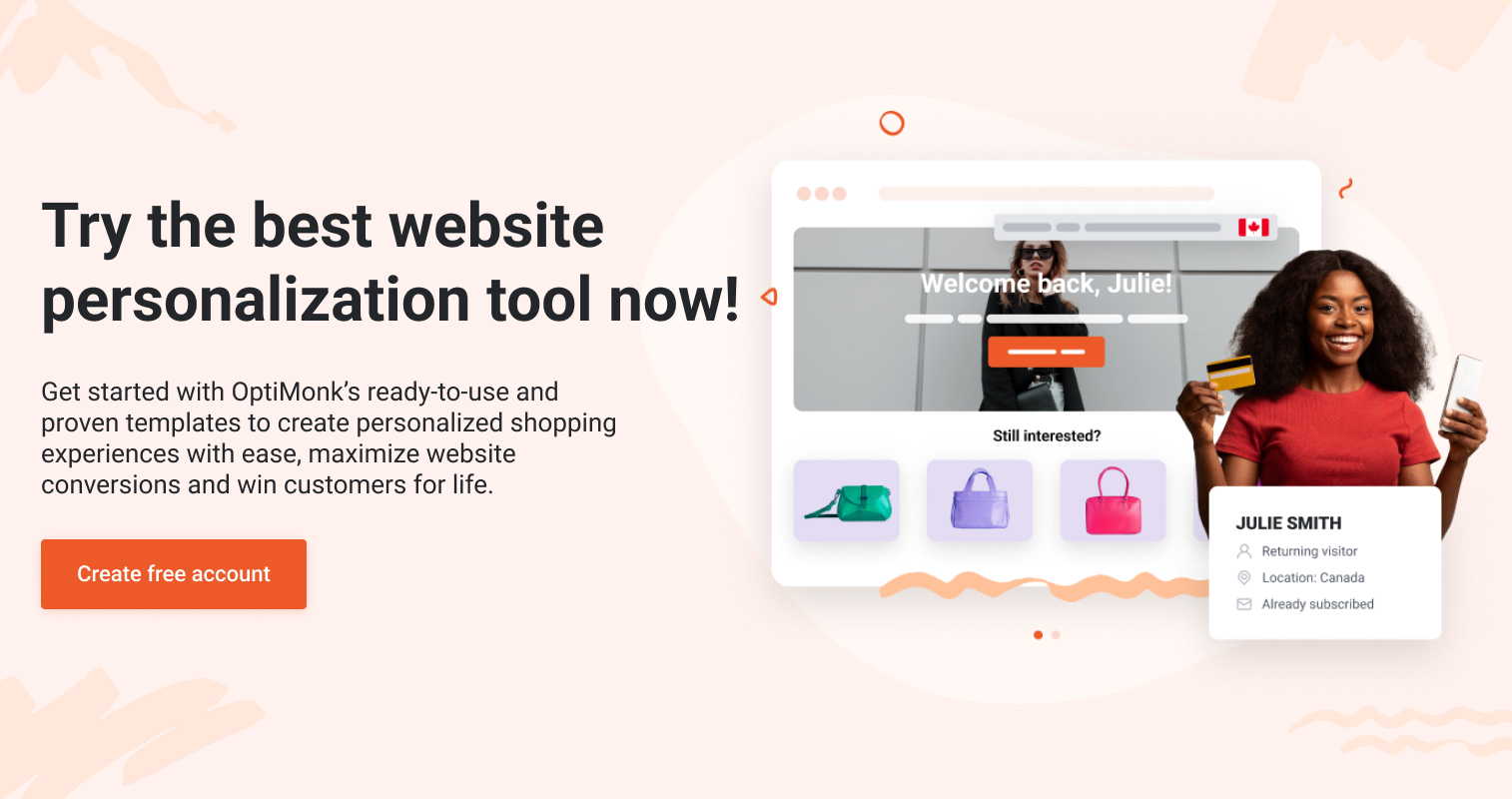- Blog
- What is Dynamic Website Personalization & How Can It Help Conversions
What is Dynamic Website Personalization & How Can It Help Conversions
-
Nikolett Lorincz
- Personalization
- 6 min read
Table of Contents
An online store that can predict what its customers want to see will always be easier to use—and more popular—than its competitors. And this is where dynamic website personalization comes into play.
Digital marketing statistics show that site visitors expect to see personalized content that responds to their specific interests. 80% of consumers are more likely to do business with a company that offers personalized experiences, while 76% of consumers get frustrated when companies don’t use personalization.
In this article, we’ll talk about dynamic content (a.k.a. dynamic website personalization): what it is, why you need to have a personalization strategy, and 5 examples of excellent dynamic website personalization.
Let’s begin!
What is dynamic website personalization?
Dynamic personalization means presenting website content that adapts to each individual customer (unlike static content, which stays the same for everyone).
Based on an understanding of your website visitors’ needs and their buying habits, you can create a personalized conversion funnel just for them.
One example of dynamic content would be providing relevant product recommendations on your homepage.
What are the benefits of dynamic web personalization?
Personalized website experiences lead to better, more productive visits. The more personalization and dynamic content you use, the more seamless the visitor experience will be.
Relevant website content really grabs the attention of your visitors and engages them, which means you’ll boost conversions and significantly increase the ROI of all your marketing campaigns.
Better conversion rates will lead to more sales from the same amount of traffic, meaning lower acquisition costs.
However, you won’t just experience short-term benefits. Dynamic personalization also leads to real connections between customers and businesses, resulting in more customer loyalty and a higher customer lifetime value.
5 real-life examples of dynamic content on websites
As we’ve seen, many ecommerce sites are using website personalization to improve the customer journey, encourage faster conversions, and build brand loyalty.
Here are five great examples of content personalization in action.
1. Amazon
Amazon is a pioneer when it comes to dynamic website personalization, and they still have a better understanding of their customers than anyone else.
They provide personalized recommendations and content across their entire site, starting with the homepage.
Below, you can see content personalization based on name in the top right corner, personalization based on the address in the top left, and products viewed on previous visits below that.
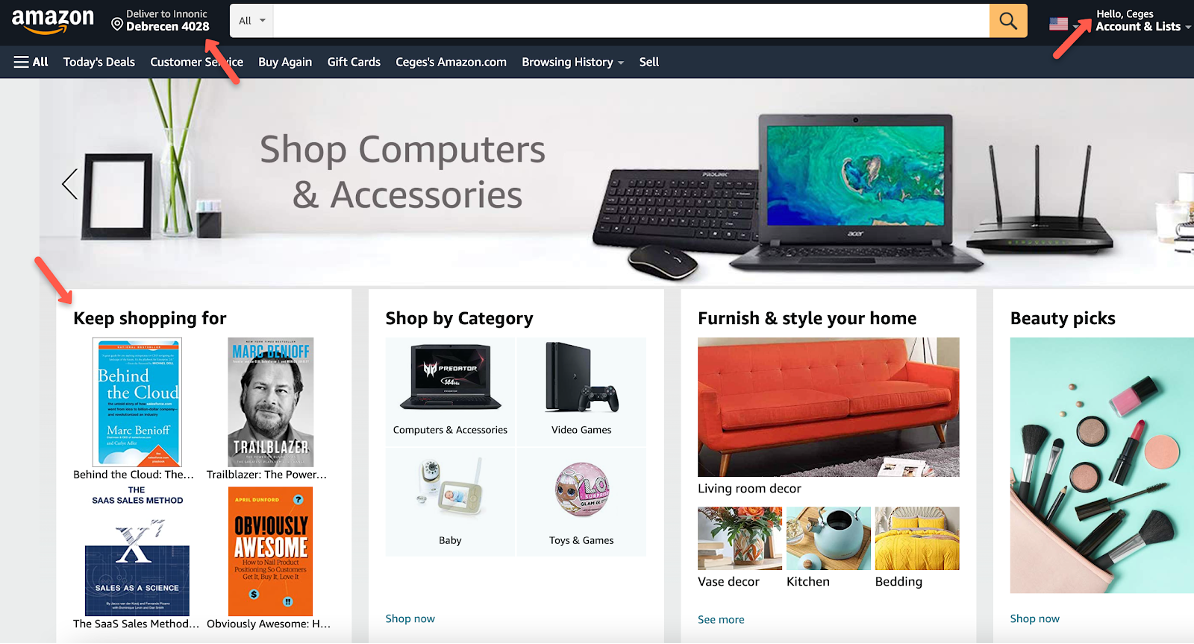
Here’s another example of Amazon’s personalized recommendations, which are split into “related to items you’ve viewed” and “recommendations for you.”
They take full advantage of all the information they collect about each customer, including their browsing history, purchase history, and onsite engagement.
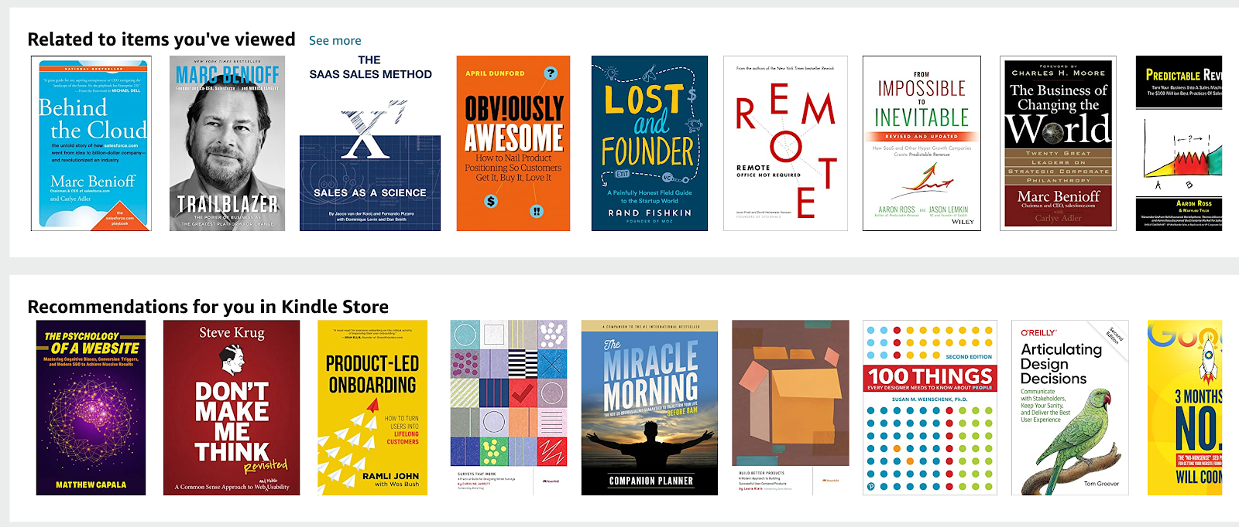
2. Sephora
Sephora provides an innovative personalized experience by not only recommending similar products on their product pages, but also including comparisons.
As you can see below, they include pricing information, a community rating out of five stars, and “ingredient highlights.”
This is all highly relevant content that helps customers make a decision more easily and can dramatically shorten the time it takes them to actually make a purchase. Also, products with high ratings have a lot of social proof behind them.
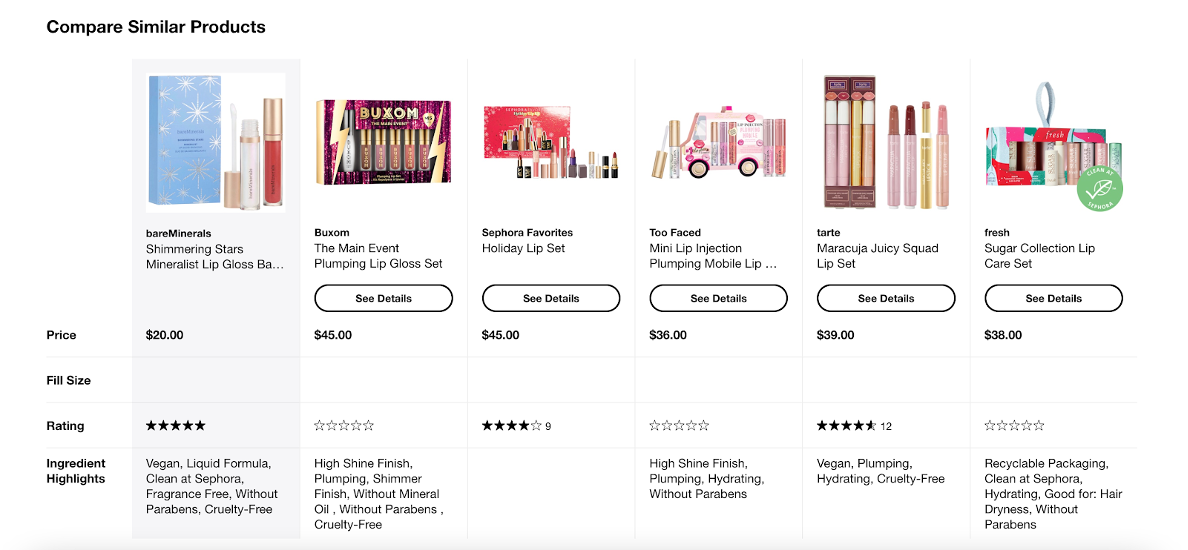
3. Best Buy
Best Buy is another giant company that’s been providing great dynamic personalization on their site for a long time.
Their homepage features both “recommended for you” and “continue shopping” sections.
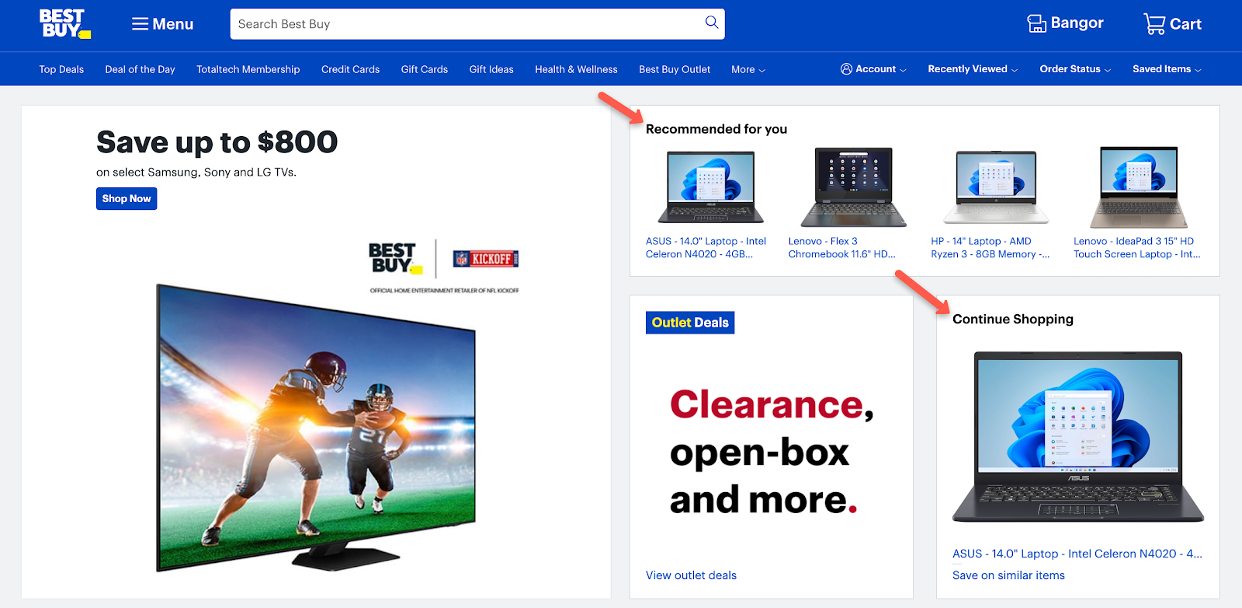
4. Etsy
Etsy takes a slightly different approach to personalized recommendations than Amazon and Best Buy.
Like those brands, they base their product recommendations on consumer data and site behavior.
However, they present their recommendations as “Recently viewed & more” instead of splitting them up into different sections. This subtle change to the customer experience means they’re showing users a mix of products they’ve seen before and new ones.
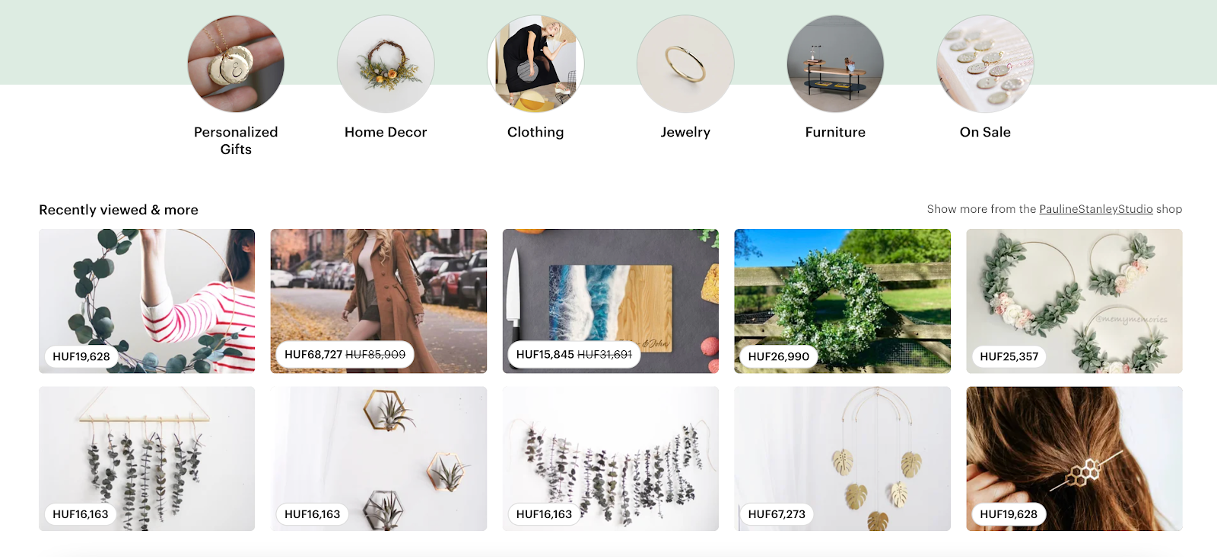
5. ASOS
ASOS personalizes their site by showing a discount code for new visitors on their product pages. Customers who’ve made purchases before won’t see the message.
This is designed to boost conversion rates for first-time customers (who are one of the hardest customer segments to persuade to make a purchase).
As a nice added touch, they also have recommended sizes that change based on customer data.
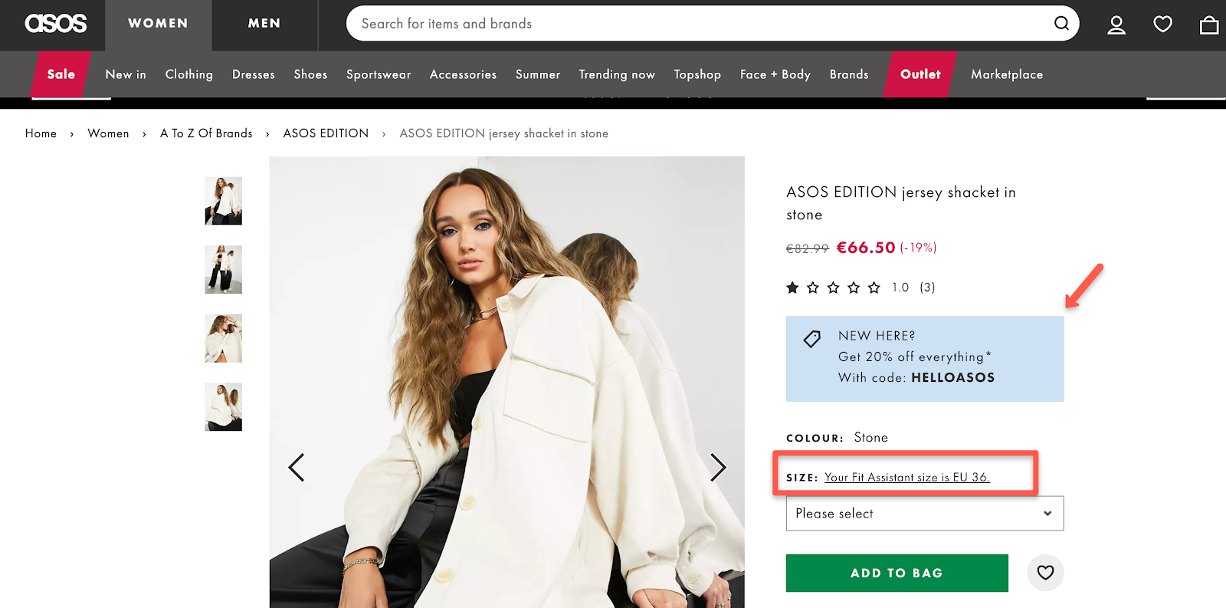
How to create dynamic content?
To implement a content personalization strategy, you’ll need to collect data on your customers and split them into segments. Changes to dynamic content are usually based on various first- and third-party data sources, including user behavior (e.g. what pages they visit), customer data (e.g. past purchases), and demographic data (e.g. location).
You’ll need website personalization software that’s capable of performing data collection and then changing parts of your website based on that data.
OptiMonk is a website personalization tool that allows you to easily create embedded content.
You can add personalized offers, incentives, surveys, and messages to your website without adding to the promotional noise. You’ll be able to create a unique customer experience for each visitor that won’t feel obtrusive, since your embedded dynamic content blends right in.
Here’s an example of embedded content:
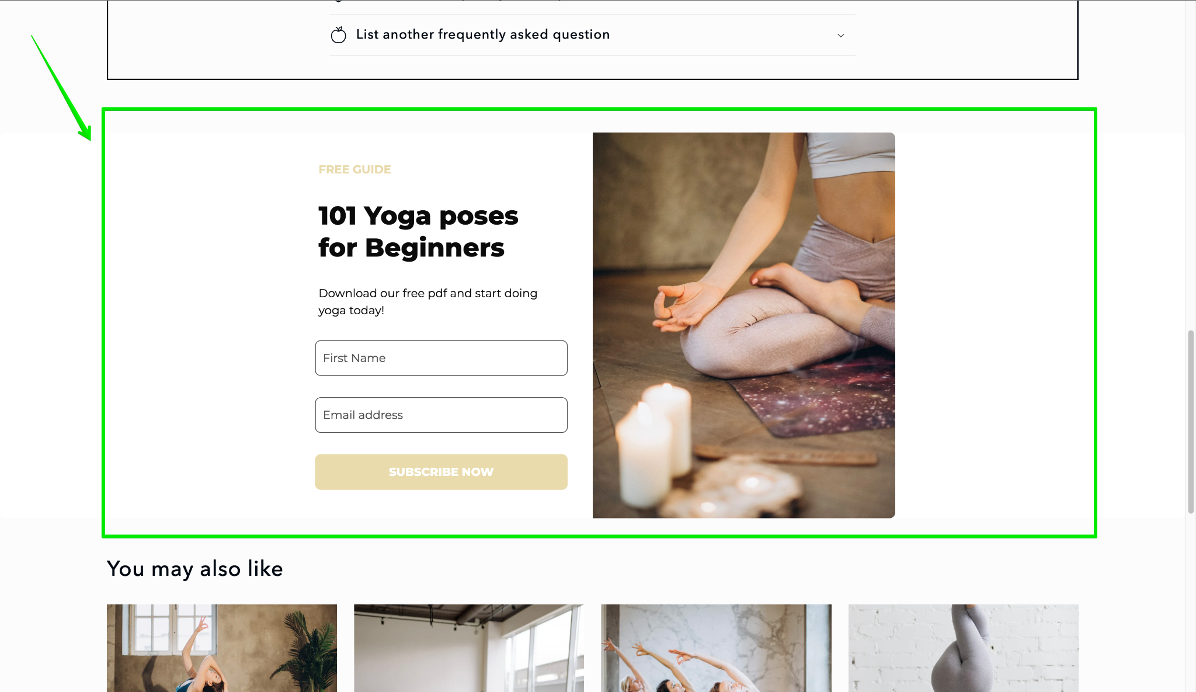
Learn more: Embedded Content
OptiMonk also allows you to use smart tags, which can take your website personalization up a notch. You can leverage any zero- and first-party data you collect to provide hyper-personalized content.
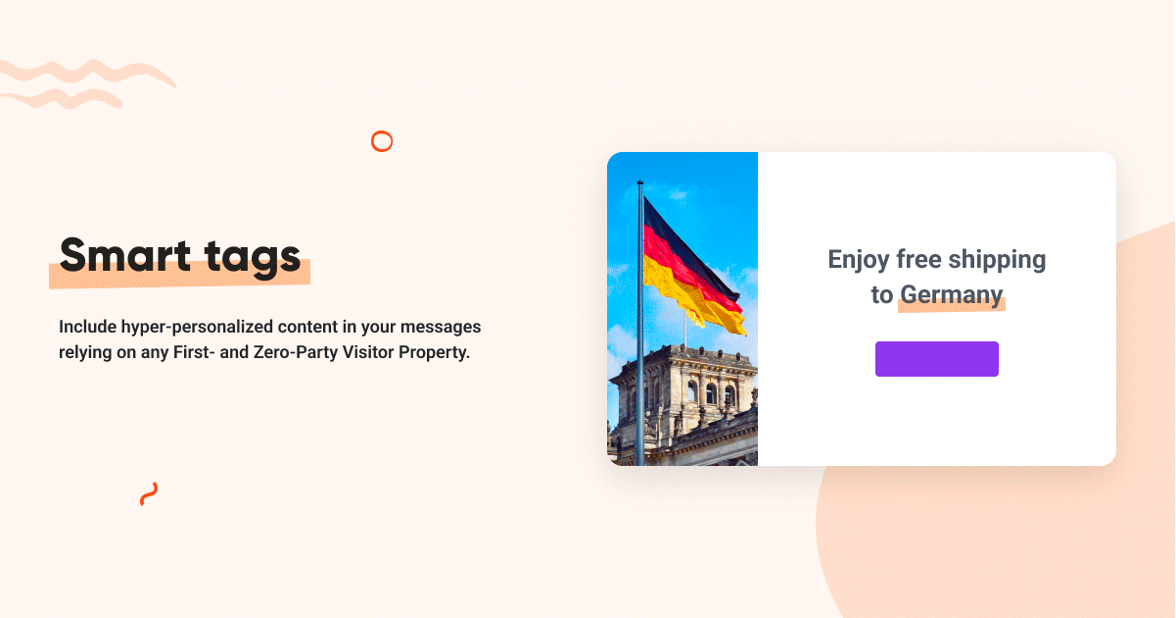
Learn more: Smart Tags
Wrapping up
Hopefully you’ve been able to learn something from this brief overview of dynamic website personalization and its usefulness across the sales cycle. If you’d like to see your store’s performance improve dramatically, you’ve got to start providing personalized user experiences.
With website personalization software widely available, dynamic content is no longer one of those emerging technologies that only ecommerce giants like Amazon can afford to use.
OptiMonk’s free-to-use website personalization tool can help you leverage all the data collected by your site across multiple touchpoints. Why not start optimizing your customer journey on a personal level today?
Migration has never been easier
We made switching a no-brainer with our free, white-glove onboarding service so you can get started in the blink of an eye.

What should you do next?
Thanks for reading till the end. Here are 4 ways we can help you grow your business:
Boost conversions with proven use cases
Explore our Use Case Library, filled with actionable personalization examples and step-by-step guides to unlock your website's full potential. Check out Use Case Library
Create a free OptiMonk account
Create a free OptiMonk account and easily get started with popups and conversion rate optimization. Get OptiMonk free
Get advice from a CRO expert
Schedule a personalized discovery call with one of our experts to explore how OptiMonk can help you grow your business. Book a demo
Join our weekly newsletter
Real CRO insights & marketing tips. No fluff. Straight to your inbox. Subscribe now
Nikolett Lorincz
- Posted in
- Personalization
Partner with us
- © OptiMonk. All rights reserved!
- Terms of Use
- Privacy Policy
- Cookie Policy
Product updates: January Release 2025









